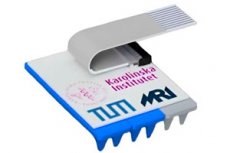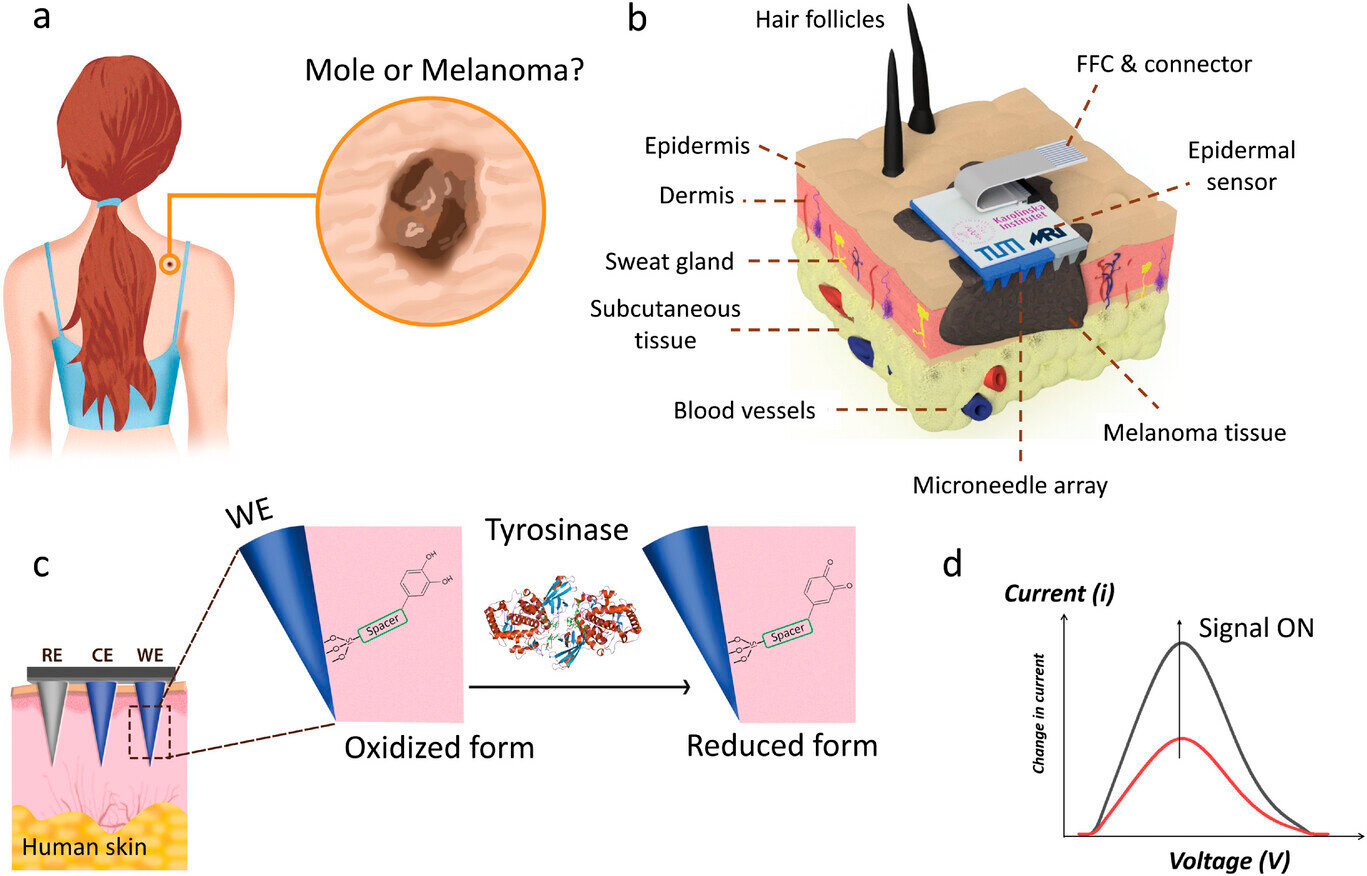Nye publikasjoner
Forskere har utviklet et mikronålplaster for tidlig påvisning av hudkreft
Sist anmeldt: 02.07.2025

Alt iLive-innhold blir gjennomgått med medisin eller faktisk kontrollert for å sikre så mye faktuell nøyaktighet som mulig.
Vi har strenge retningslinjer for innkjøp og kun kobling til anerkjente medieområder, akademiske forskningsinstitusjoner og, når det er mulig, medisinsk peer-evaluerte studier. Merk at tallene i parenteser ([1], [2], etc.) er klikkbare koblinger til disse studiene.
Hvis du føler at noe av innholdet vårt er unøyaktig, utdatert eller ellers tvilsomt, velg det og trykk Ctrl + Enter.

Forskere ved Karolinska Institutet har utviklet en ny metode for å oppdage ondartet melanom. En ny type plaster utstyrt med mikronåler kan identifisere biomarkøren tyrosinase direkte i huden, ifølge en studie publisert i tidsskriftet Advanced Materials.
Plasteret er utstyrt med mikronåler som kan oppdage tyrosinase, et enzym som er en viktig biomarkør for malignt melanom. Ved å måle nivåene av dette enzymet direkte i huden, kan forskere raskt identifisere endringer forbundet med sykdommen.
«Vi brukte menneskelig vev fra friske individer. Ved å påføre tyrosinase direkte på huden, kunne vi simulere hudkreft», forklarer studiens endelige forfatter, Onur Parlak, førsteamanuensis ved Institutt for solmedisin ved Karolinska Institutet.
«Dette er et viktig skritt fremover i å forbedre overvåkingen av hudhelse, og metoden kan også brukes til å screene for andre biomarkører ved ganske enkelt å endre designet.»

Skjematisk illustrasjon av en epidermal mikronålsensorlapp med en smart probe. En demonstrasjon av melanosehud på ryggen til en pasient vises. Kilde: Advanced Materials (2024). DOI: 10.1002/adma.202403758
Malignt melanom er den mest alvorlige formen for hudkreft og den raskest voksende kreftformen. Studien viser at et nytt plaster kan være et alternativ til dagens diagnostiske metoder, noe som kan føre til tidligere oppdagelse og behandling av malignt melanom. Forskerne håper at arbeidet deres vil bidra til å redusere antall prosedyrer og forbedre pasientenes livskvalitet.
«Metoden vår er mindre invasiv og har potensial til å gi raskere og mer pålitelige resultater enn tradisjonelle biopsier», sier Parlak. «Målet vårt er å fortsette å utvikle og forbedre denne teknikken for å tilby mer nøyaktig og smertefri diagnostikk.»
